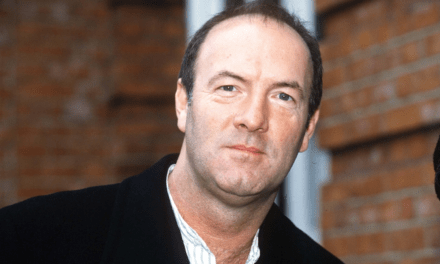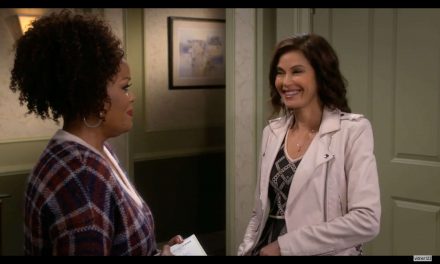In Tim Pratt’s short story “Impossible Dreams,” a cinephile named Pete discovers a mysterious video store from an alternative universe that appears in our reality only for briefer and briefer periods each evening near closing time. As he becomes more-than-friends with the clerk, Ally, Pete discovers the store’s amazing, not from our reality, collection, which includes:
• I, Robot, not starring Will Smith, from a script by Harlan Ellison.
• The director’s cut of The Magnificent Ambersons, including Orson Welles’ long missing footage.
• The Terminator, with O. J. Simpson as the killer cyborg and Arnold Schwarzenegger as Kyle Reese.
• Orson Welles’ Jason and the Argonauts.
• Return of the Jedi—directed by David Lynch.
• A sequel to The Breakfast Club: The Lunch Bunch.
• A number of films by the greatest of all woman directors, Sara Hansen.
• Tim Burton’s The Death of Superman, starring Nicholas Cage as the Man of Steel.
• Casablanca, starring George Raft.
• Indiana Jones and the Raiders of the Lost Ark with Tom Selleck as Indy.
• A John Wayne film about the ground invasion of Japan that ended WWII.
• Stanley Kubrick’s (not Steven Spielberg’s) Artificial Intelligence.
All of these films, of course, have some basis in fact. That wife-murdering former star football player was considered for the role of an assassin from the future. Welles’ adaptation of Booth Tarkington’s novel had been mangled by the studio. Kubrick did plan to make A.I. but did not live long enough and asked the often schmaltzy Spielberg to take it on. The US considered invading Japan but opted for dropping atomic bombs instead.
In the end, Pete gets the girl and they settle down to watch Citizen Kane, which does not exist in her reality.
 Jorge Luis Borges (Image from Britannica Online)
Jorge Luis Borges (Image from Britannica Online)
Pratt is not, of course, the first writer to imagine into existence might-have-beens. The incomparable Borges did it throughout his career. His “Library of Babel,” for example offered the ultimate collection, including every possible book (and another just like it but one word longer). In Borges’ “Pierre Menard, Author of the Quixote,” a pedantic Cervantes scholar steeps himself in the great Spanish novelist’s world and then succeeds in rewriting his masterwork: “The texts of Cervantes and that of Menard,” we are told, “are verbally identical, but the second is almost infinitely richer” (52). And in “Tlön, Uqbar, Orbis Tertius” a seemingly aberrant article about an imaginary world in an encyclopedia about a country name “Uqbar” leads to the gradual replacement of our world by a once wholly imaginary reality known as “Tlön.” And my frequent collaborator Joseph Walker reminds that “Impossible Dreams “seems to be a riff on an idea from Neil Gaiman’s ‘Sandman’ comic book series about the Lord of Dream, Morpheus. One of the rooms in his house was a library containing every book that had been contemplated but not written, from Wodehouse’s PSmith and Jeeves and Tolkien’s The Lost Road to the novel you mused about when you were caught in traffic.”
Now television has begun to play with such textual metaphysics. Take FOX’s (and Sky 1’s) Fringe, which I wrote about in a recent Telegenic, a series created by J. J. Abrams, the man who brought us Felicity, Alias, Lost, Mission Impossible 3, and the relaunch of Star Trek, and his Star Trek co-authors Roberto Orci and Alex Kurtzman. Fringe (for those unfamiliar with its three season run) follows the investigations of the “Fringe” division of the F.B.I. charged with making sense of an X-Filesish series of weird, fringe anomalies known as “The Pattern.” By the end of Season One, however, we know, and have even visited (in “There’s More Than One of Everything”) an alternate universe, Earth 2, from which The Pattern emanates, in which the World Trade Center still stands but the White House has been destroyed. Fringe started slowly but had come to seem more like Philip Pullman’s His Dark Materials brought to TV than The X-Files.
In its second season, on April Fools’ Day, 2010, “Peter” aired, and Fringe would never be the same. An episode that revealed (big spoiler warning) that endearing mad scientist and co-discoverer of the other reality Walter Bishop had stolen his son from Earth 2 (“There’s More Than One of Everything” you see) to replace his own dead-from-a-disease off-spring, “Peter” was a universe jumping, time-hopping flashbacking hour of television. Even the show’s customary, brilliant credit sequence morphed back in time.
And it was in “Peter” that Fringe began to play with pop cultural differences between its two realities. A movie marquee for an alterna-Back to the Future starring Eric Stoltz (instead of Michael J. Fox) had me excited about the new intertextual and narrative possibilities of a series I had initially been cool to.

“Peter” (2.16)
Season Two’s two-part finale “Over There” brought further postmodernist anticipation. In addition to putting disgraced (in our reality) President Richard Nixon on a 50¢ coin and Dr. Martin Luther King on the $20 bill, a certain doll, it seems, is still popular “over there”.

“Over There,” Part I (2.22)
And The West Wing, which left the air over here in 2006, is still running over there, though in a time spot outside prime time impossible in our TVverse.

“Over There,” Part I (2.22)
In subsequent episodes set in Earth 2, we
• Pay a visit to its version of New York’s Penn Station:
 “Entrada” (3.8)
“Entrada” (3.8)
• Discover that Berke Breathed’s wonderful comic strip Bloom County has turned out somewhat differently and does not feature a penquin.
 (“Bloodline” 3.18)
(“Bloodline” 3.18)
• Learn that Taxi Driver over there was directed by, not Martin Scorsese, but Francis Ford Coppola.
On this season’s “6955 kHz” Fauxlivia (Olivia’s twin from the other universe) and Peter visit the rare book dealer Markham and acquire Seamus Wiles’ The First People (1897), learning thereby about the heretofore unknown human ancestors who invented the vacuum (the real one—the one nature abhors) and may have both destroyed them and somehow brought about Earth 2.
 “6955 kHz” (3.6)
“6955 kHz” (3.6)
This wonderful Borgesian image of Markham’s labyrinthine mess of a bookstore seems now a nice figure for the increasingly complex maze of Fringe‘s narrative.

This week’s news that FOX has, surprisingly, renewed the ratings-challenged Fringe (even after banishing it to the wasteland of Friday night) guarantees that the series will continue to have the opportunity to explore, as promised, “endless impossibilities.”


![AN OTHER[ED] PLACE: NHK’S SOMEWHERE STREET by Melissa Beattie](https://cstonline.net/wp-content/uploads/2025/02/SomewhereStreetFeaturedImage-440x264.jpg)


